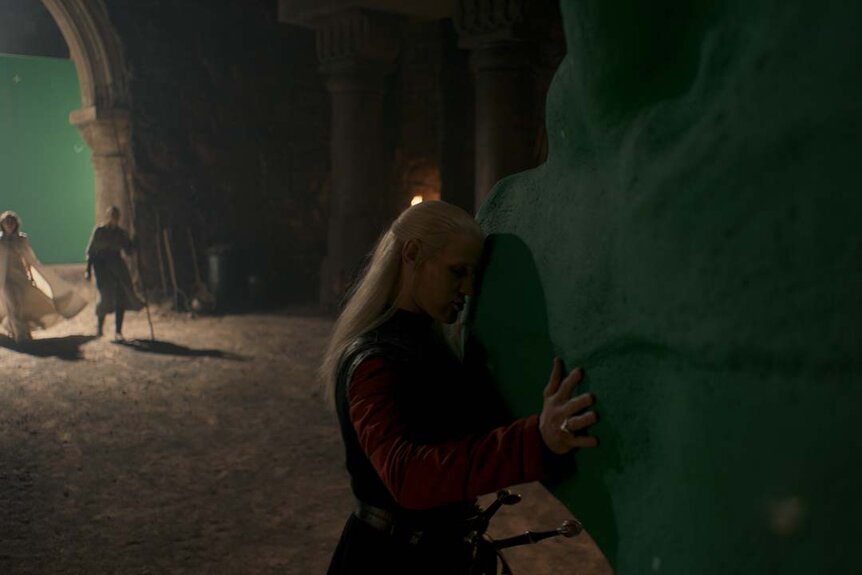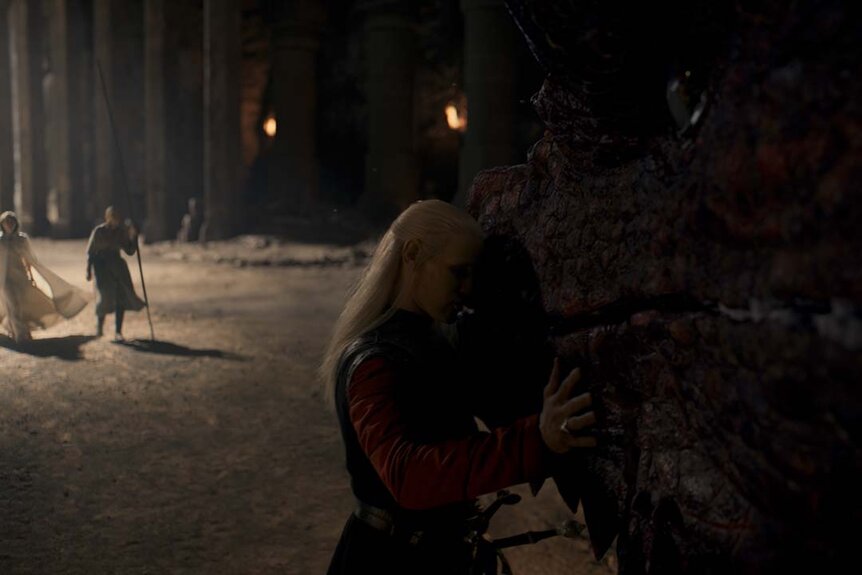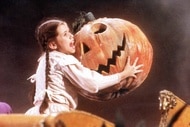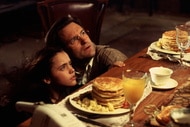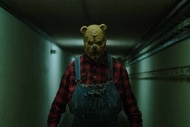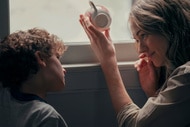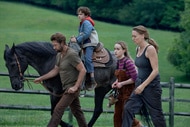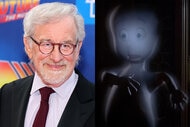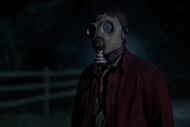Create a free profile to get unlimited access to exclusive videos, sweepstakes, and more!
How VFX sold the illusion of the Targaryens' most devastating weapon in 'House of the Dragon'
SYFY WIRE sits down with Mike Bell, who oversaw the show's sweeping effects work on behalf of MPC.
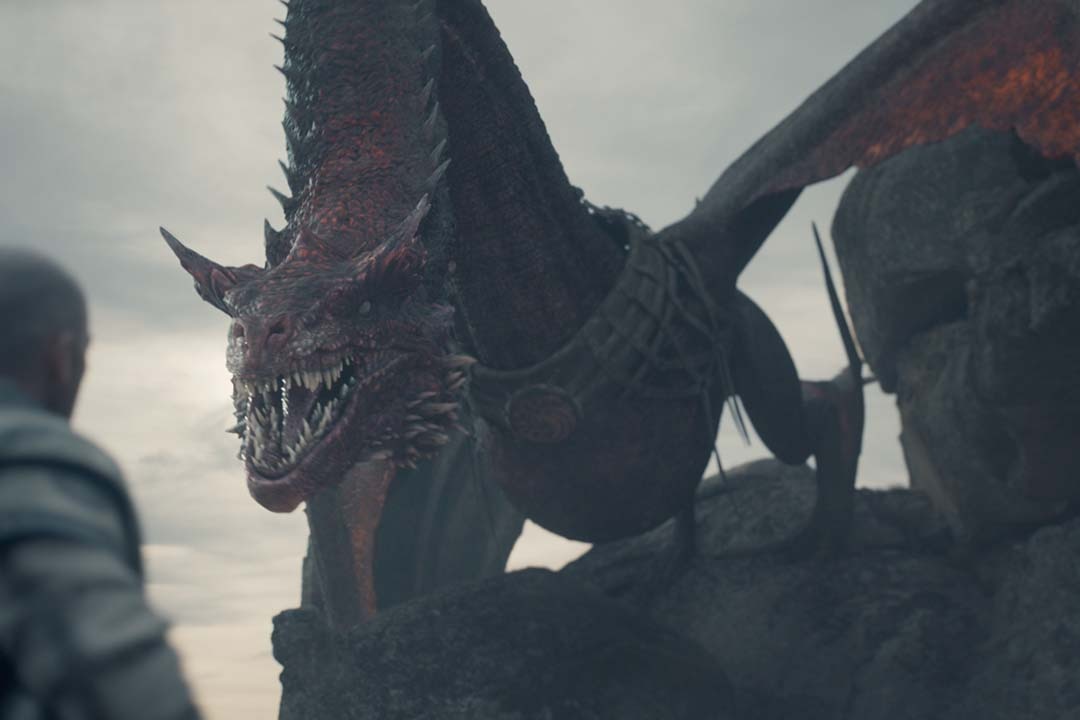
If you're going to make a television show called "House of the Dragon," then you better invest plenty of cash toward the extensive VFX work needed to bring your fire-breathing fantasy lizards to life.
HBO completely understood this simple fact when it handed down the go-ahead for a Game of Thrones prequel centered around the Targaryen family, which ruled over Westeros for centuries before Robert Baratheon nearly wiped them all out. Set roughly 200 years prior to Jon Arryn's death (an event that plunges the Seven Kingdoms into utter chaos), House of the Dragon delivers all the sex, betrayal, violence, and political maneuvering fans have come to expect from the GoT mythos, with the added benefit of more dragon-related mayhem.
During a recent Zoom conversation with SYFY WIRE, Mike Bell — the project's VFX supervisor at MPC — recalled the brief he and his team received from series co-showrunner, executive producer, and director, Miguel Sapochnik. "Miguel really had an idea that the dragons should be kind of smelly, dirty, covered in dust, grimy," he explained. "Which is why in some sequences, especially when they’re just idling, we had flies buzzing around [them], just as an extra layer of realism."
MPC split dragon duties with Pixomondo, focusing their efforts on Caraxes (ridden by Prince Daemon), Meleys (ridden by Princess Rhaenys), Seasmoke (ridden by Ser Laenor Velaryon), young Vermax (ridden by Jacaerys Velaryon), and Sunfyre (ridden by King Aegon II). The overall goal, Bell said, was to infuse each wyvern with a distinct identity. "These royal princes and princesses have eggs put in their crib when they're born, so they have this bond with these dragons right from birth. Sometimes they hatch and sometimes they don't and when they do — because they’ve grown up together — they almost take on aspects of their rider’s personality."
Like Daemon (played by Doctor Who alum, Matt Smith), for instance, Caraxes "is much more unpredictable, kind of dangerous," Bell added. "You like Caraxes, but you’re also terrified of him because you don’t know what he’s gonna do. [He’s] a bit more uncontrollable and needs calming down." In particular, MPC referenced the transparent eyelid crocodiles use for protection while swimming underwater. "When Caraxes is angry, his eyes literally glaze over and he suddenly becomes a lot more uncontrollable."
Meleys, on the other hand, displays attributes of the calculating Queen Who Never Was (portrayed by Eve Best). "Regal, matriarchal, older, wiser," Bell elucidated. "Much more royal in the design, the horns are almost crown-like to a degree."
The young Vermax seen in what Bell called the "How to Train Your Dragon sequence" in Episode 6 ("The Princess and the Queen") was based on Komodo dragons, birds of prey, and packs of wild dogs. "When you see [dogs] in the wild, they're always scanning the horizon and looking for threats and danger. They're never just sitting and thinking, they're always looking and questioning. In Episode 6, you can always see Vermax looking at the individuals ... weighing them up all the time. 'Who are you? Why are you here? Should I kill you?'"
Wanting to make sure each winged beast felt absolutely different from the last, MPC requested "a trading card pack of these dragons with attributes," Bell recalled, comparing the resultant dragon dossier they received to the popular Top Trumps trading card game in the United Kingdom. "We wanted those kind of things where we had all the attributes — what they do, what they're good at, were they stealth-like, whether they’re angry [etc.]."
Of course, the VFX vendors already had a strong baseline from Dany's three dragons featured across the eight seasons of Game of Thrones: Dragon, Rhaegal, and Viserion. With that said, "it's not necessarily one size fits all, it's much more complicated than that."
"We definitely looked at what had come before because as the old series was progressing and the work was getting more and more impressive, you just wanted to take what's come before and try and improve it if you can," Bell admitted. "It was using that stuff as more [of a] reference, even down to the way the muscles jiggle and [the look of their] wings. How thick the membrane is on the wings; whether it bounces when they’re walking; and how much it flaps around and whether it should be like really thick, dense leather or quite a thin membrane."
Another notable mandate from Sapochnik was that the dragons should look more at home in the skies than they do on the ground. The showrunner specifically asked for them to "look awkward and a bit contorted like it doesn't belong there" whenever they weren't flying.
"There’s a scene in Episode 1 where Daemon's trying to calm Caraxes down in the Dragonpit tunnel. There's a shot from the front and it’s kind of twisted and contorted and doesn't feel like it fits in there," Bell explained. "And even in the last episode, there's a scene where Caraxes climbs over the rock, and it's kind of slipping and skidding. That’s an interesting idea — you're looking at something that's meant to be scary and terrifying, but it’s also a little bit skinny and clambering over these rocks."
The sheer variety of mythical beasts presented a unique challenge for MPC, which needed to figure out a way to sell the illusion on a case-by-case basis. "I think it's just making sure that the walking matches its build and size and shape," Bell continued. "Because it's very easy to throw you off ... It’s just getting those movements right, getting the weight right, and making sure that the flight cycles and walk cycles and characteristics suit the look. Otherwise, it just doesn't doesn't really work."
The complete first season of House of the Dragon is now streaming on HBO Max. "This really feels like Act I of something bigger," Bell concluded, referring to how a second season has already been green-lit. "I haven’t read any scripts [for Season 2]. There were a few conversations about what might come, but I feel like I’d probably get in trouble if I shared any of them now."
If you're in the mood for some lighter dragon fare, the first two How to Train Your Dragon films are available on Peacock.
